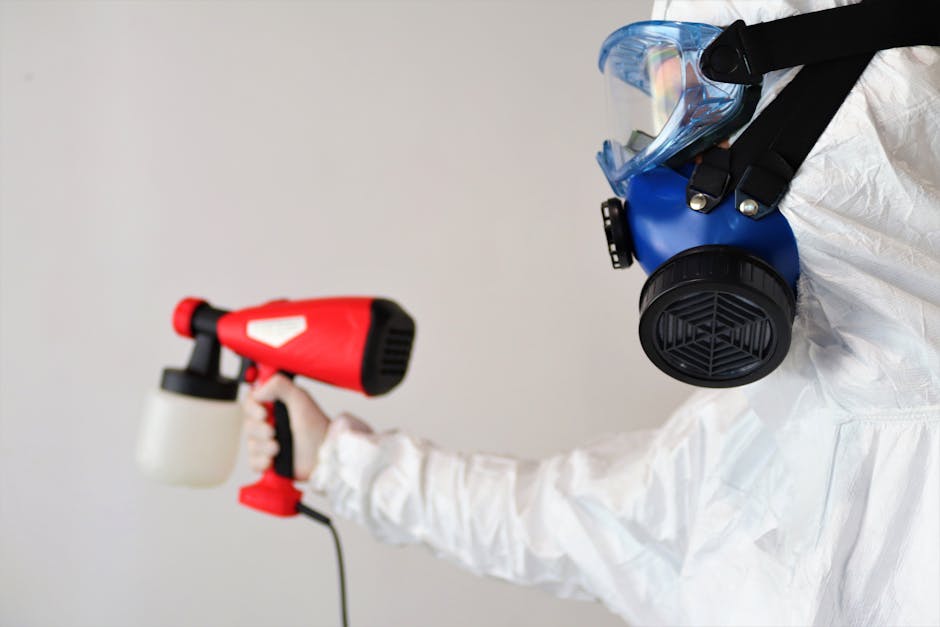Understanding toxic mold and its dangers
Toxic mold, also known as black mold, can pose serious health risks. It can cause respiratory issues, allergic reactions, and even neurological problems in some cases. Toxic mold thrives in damp and humid environments, such as bathrooms, kitchens, and basements. It is important to be vigilant about preventing and addressing mold growth in your home to protect yourself and your family from potential health hazards.

Signs of toxic mold infestation in your property
These are the signs to look for when checking for toxic mold in your property:
-
Visible Mold Growth: Look for any patches of mold on walls, ceilings, or other surfaces, especially in damp or humid areas.
-
Musty Odor: If you notice a strong, earthy or musty smell in certain areas of your property, it may indicate the presence of mold.
-
Water Damage: Check for water stains, discoloration, or warping on walls, ceilings, or floors, as these can be signs of a moisture problem that may lead to mold growth.
-
Health Symptoms: Be aware of any unexplained health issues such as allergies, respiratory problems, or skin irritation, as these can be caused by mold exposure.
Health risks associated with toxic mold exposure
Exposure to toxic mold can lead to health issues such as respiratory problems, nasal congestion, throat irritation, coughing, and skin irritation. Prolonged exposure may also cause more serious health complications, including asthma, allergic reactions, and other respiratory conditions. It’s essential to address any suspected mold infestation promptly to mitigate these health risks.
Preventing toxic mold infestation in your property
To prevent toxic mold infestation in your property, it’s important to maintain a dry and well-ventilated environment. Here are some tips to help you protect your property:
- Keep humidity levels below 60% to prevent mold growth.
- Fix any leaks or water damage promptly to prevent moisture buildup.
- Use exhaust fans in the kitchen and bathroom to reduce humidity levels.
- Regularly inspect and clean gutters and downspouts to ensure proper drainage.
- Inspect your property for any signs of mold and address them immediately.
- Consider using mold-resistant products when renovating or building your property.
By following these steps, you can help prevent toxic mold from infesting your property and safeguard the health of its occupants.
Identifying high-risk areas for toxic mold
To identify high-risk areas for toxic mold, check for signs of water damage in your property. Leaks, flooding, and humidity are the main culprits. Watch out for damp areas, condensation, and musty odors, as these indicate the presence of moisture. Pay special attention to bathrooms, kitchens, basements, and attics as these areas are most prone to mold growth. Inspect your plumbing, roof, and HVAC systems regularly to catch any potential water issues early.
Importance of proper ventilation and moisture control
Proper ventilation and moisture control are crucial in preventing toxic mold infestation in your property. When the air circulates properly and excess moisture is minimized, it becomes difficult for mold to grow and spread. Maintaining good airflow and keeping humidity levels low can help in preventing mold from thriving in your home. Additionally, using ventilation fans, repairing any leaks promptly, and using dehumidifiers can all contribute to creating an environment less favorable for mold growth.
DIY methods for removing toxic mold
To effectively remove toxic mold from your property, it’s important to utilize DIY methods that are safe and efficient. Consider these approaches:
- Vinegar: Create a solution of vinegar and water in a 1:1 ratio and spray it directly onto the mold-infested area. Let it sit for an hour before scrubbing the surface with a brush.
- Baking Soda: Mix baking soda with water to form a paste and apply it to the affected area. After letting it sit for a few minutes, scrub the surface with a brush.
- Hydrogen Peroxide: Use a 3% hydrogen peroxide solution and apply it to the moldy area. Let it sit for 10 minutes before wiping the surface clean.
By using these simple DIY methods, you can take a proactive approach to combating toxic mold infestation in your property.
Professional mold remediation services
Professional mold remediation services are essential for effectively removing toxic mold from your property and preventing its recurrence. Mold remediation professionals have the expertise and equipment to identify the extent of mold infestation, safely remove the mold, and address the underlying cause to prevent future growth. They use specialized techniques to contain and remediate the mold, ensuring a thorough and lasting solution. Hiring a professional mold remediation service can help safeguard your property and the health of its occupants from the dangers of toxic mold exposure.
Protecting your property from future toxic mold infestations
To prevent toxic mold from coming back in the future, it’s important to keep your property dry and well-ventilated. Mold thrives in damp, humid environments, so fixing any water leaks or moisture problems is crucial. Here are some key steps:
-
Repair any leaks in the roof, windows, or plumbing to prevent water from seeping in.
-
Ensure proper ventilation in areas prone to moisture buildup, such as the kitchen, bathroom, and basement.
-
Use exhaust fans in the kitchen and bathroom to reduce humidity.
-
Keep indoor humidity levels between 30-60% by using a dehumidifier if necessary.
Conclusion: maintaining a mold-free property
To keep your property free from toxic mold, it’s essential to address any leaks or moisture issues promptly. Regular inspections can help catch mold growth early, preventing it from spreading and causing damage. Implementing good ventilation and humidity control measures in areas prone to moisture buildup can also help prevent mold infestation. If you do find mold, it’s crucial to remove it thoroughly and fix the underlying moisture problem to prevent its return. Regular cleaning and maintenance, along with quick action when issues arise, are key to maintaining a mold-free property.

